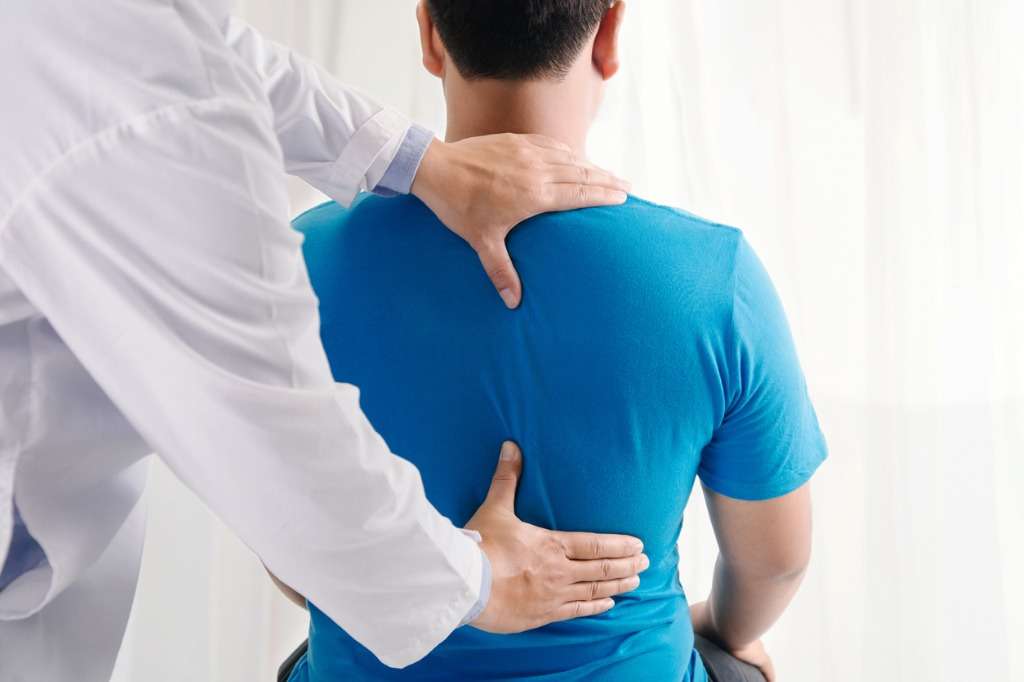
Understanding the intricate anatomy of the spine and its crucial role in movement can provide valuable insights into maintaining a healthy and active lifestyle. At Back In Motion Group, we are committed to educating our clients about spinal health and its impact on overall well-being. In this blog post, we will explore the structure of the spine, how it supports and enables movement, and the importance of maintaining spinal health.
The Structure of the Spine
The spine, or vertebral column, is a complex structure composed of 33 vertebrae, intervertebral discs, ligaments, and muscles. It is divided into five distinct regions:
- Cervical Spine: Consisting of seven vertebrae (C1-C7) located in the neck, the cervical spine supports the head and allows for a wide range of motion, including rotation, flexion, and extension.
- Thoracic Spine: Made up of 12 vertebrae (T1-T12) in the upper and mid-back, the thoracic spine is connected to the rib cage, providing stability and protection for vital organs.
- Lumbar Spine: Comprising five vertebrae (L1-L5) in the lower back, the lumbar spine bears the majority of the body’s weight and enables movements such as bending and lifting.
- Sacral Spine: The sacral spine consists of five fused vertebrae (S1-S5) that form the back part of the pelvis, providing a strong foundation for the spine.
- Coccygeal Spine: Also known as the tailbone, the coccyx is made up of four fused vertebrae and serves as an attachment point for ligaments and muscles.
Intervertebral Discs
Between each pair of vertebrae lies an intervertebral disc, which acts as a cushion and shock absorber. These discs are composed of a tough outer layer called the annulus fibrosus and a gel-like center called the nucleus pulposus. Intervertebral discs allow for flexibility and movement while maintaining the spine’s stability.
Ligaments and Muscles
Ligaments are strong, fibrous tissues that connect vertebrae to each other, providing stability and limiting excessive movement. Key ligaments in the spine include the anterior and posterior longitudinal ligaments, which run along the front and back of the vertebral bodies, and the ligamentum flavum, which connects the laminae of adjacent vertebrae.
Muscles play a vital role in supporting the spine and facilitating movement. The erector spinae muscles, located on either side of the spine, help maintain an upright posture and allow for extension and lateral flexion. Deep core muscles, including the transversus abdominis and multifidus, provide additional stability and support for the spine.
The Spine’s Role in Movement
The spine’s unique structure allows it to perform several essential functions that are critical for movement and overall health:
1. Support and Stability
The spine provides the main structural support for the body, enabling us to stand upright, maintain balance, and carry out daily activities. The intervertebral discs and ligaments work together to maintain the spine’s stability while allowing for flexibility and movement.
2. Protection of the Spinal Cord
The spinal cord, a vital part of the central nervous system, runs through the spinal canal formed by the vertebrae. The spine’s protective function ensures that the spinal cord is shielded from injury while allowing for the transmission of nerve signals between the brain and the rest of the body.
3. Facilitating Movement
The spine’s articulated structure, with its intervertebral discs and facet joints, enables a wide range of movements, including flexion, extension, rotation, and lateral bending. Each region of the spine contributes to different types of movements, allowing for flexibility and adaptability in various activities.
4. Shock Absorption
The intervertebral discs play a crucial role in absorbing and distributing the mechanical loads placed on the spine during activities such as walking, running, and lifting. This shock absorption capability helps protect the vertebrae and other spinal structures from damage.
Maintaining Spinal Health
Given the spine’s critical role in movement and overall health, it is essential to take proactive steps to maintain its health and function. Here are some tips for keeping your spine healthy:
1. Maintain Good Posture
Proper posture helps reduce strain on the spine and surrounding muscles. When sitting, ensure that your back is supported, and your feet are flat on the floor. When standing, keep your shoulders back and avoid slouching.
2. Stay Active
Regular exercise helps strengthen the muscles that support the spine, improve flexibility, and maintain a healthy weight. Activities such as walking, swimming, and yoga are particularly beneficial for spinal health.
3. Lift Properly
When lifting objects, use your legs rather than your back to avoid straining the spine. Bend at the knees, keep the object close to your body, and avoid twisting while lifting.
4. Stretch Regularly
Incorporate stretching exercises into your routine to maintain flexibility and reduce muscle tension. Focus on stretching the back, neck, and legs to support spinal health.
5. Visit a Chiropractor
Regular chiropractic care can help maintain spinal alignment, prevent injuries, and address any issues that may arise. At Back In Motion Group, our experienced chiropractors are dedicated to helping you achieve optimal spinal health through personalized treatments.
Conclusion
The spine’s intricate anatomy and its vital role in movement highlight the importance of maintaining spinal health. By understanding the structure and function of the spine, you can take proactive steps to support its health and prevent issues that may impact your quality of life. At Back In Motion Group, we are committed to helping our clients achieve and maintain optimal spinal health. If you have any concerns about your spine or are looking for ways to improve your overall well-being, contact us today to schedule a consultation. Let us help you keep your spine healthy and keep you moving forward.
